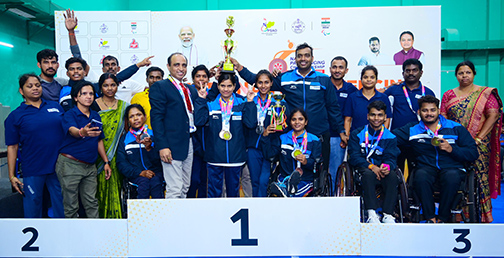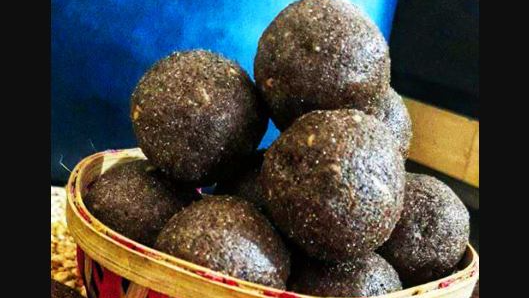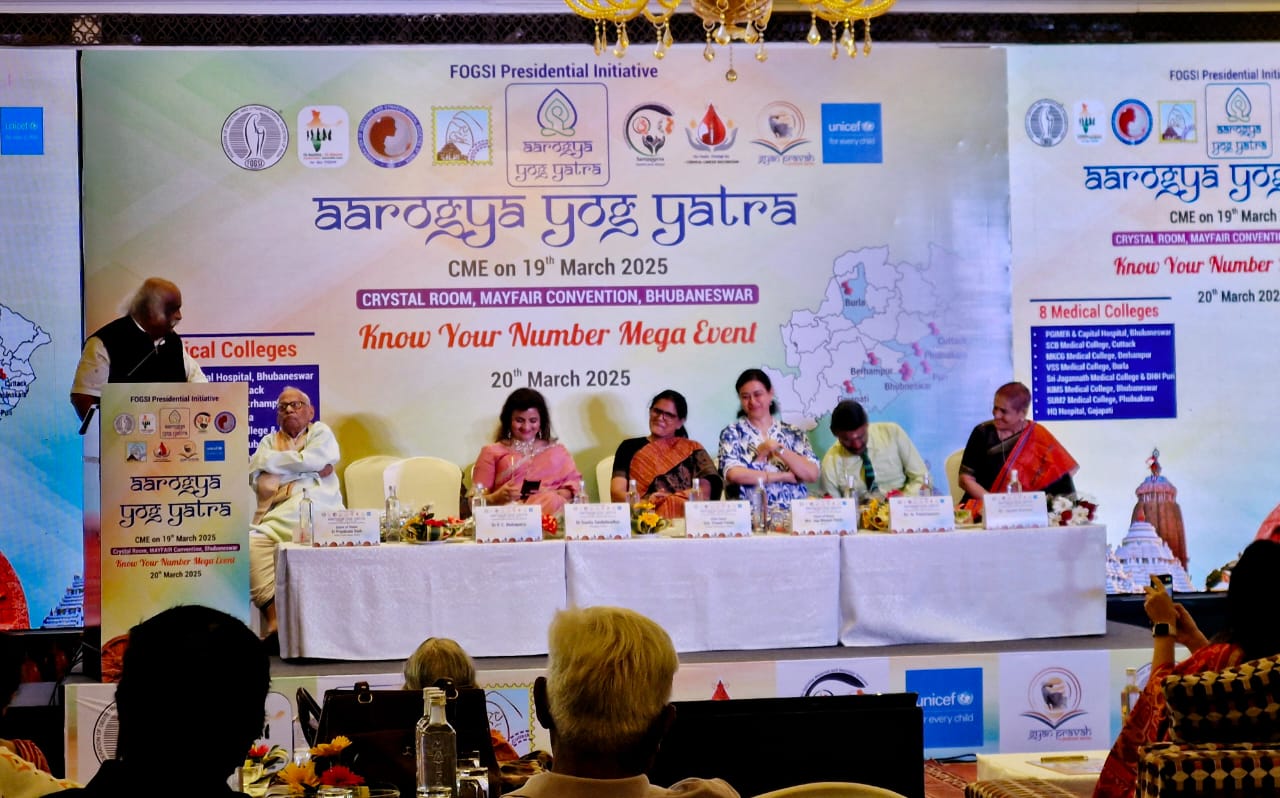Beating Odisha Summers: A Guide to Water-Retaining Fruits and Safe Practices
The summer season in Odisha is characterized by intense heat, posing significant risks of dehydration and heatstroke to its residents. Maintaining adequate hydration is crucial for overall health and well-being during this period, and the consumption of water-rich fruits plays a vital role in achieving this. The brief aims to identify the best fruits for water retention that are specific to Odisha during the summer, address concerns regarding artificial coloring in popular fruits like watermelon and cucumber, and recommend effective alternative hydration strategies to combat the summer heat.
Identifying Top Water-Retaining Fruits
Several fruits and vegetables are known for their high water content, making them excellent choices for hydration during hot weather. Among these, cucumber stands out with approximately 96-97% water content, celery at 95%, and tomatoes at 95%. Radishes boast 95% water content. Zucchini contains around 94% water, while Portobello (Button Chatu and Pala Chatu) mushrooms and okra have about 93%. Watermelon, often associated with hydration, contains 91-92% water, similar to strawberries at 91-92%. Even plain yogurt has a significant water content of 88%, while oranges and grapefruit (Batapi) contain 86-88% water.
During the summer season in Odisha, a variety of fruits are commonly available. These include mango, a widely popular fruit, watermelon, also highly favored for its refreshing properties, and papaya. Musk melon and pineapple are also found in the region during this time. Other summer fruits available in Odisha include guava, orange, sweet lime, banana, plums, kiwi, jackfruit, and figs. Markets in Bhubaneswar, as highlighted in a local report, are abundant with bananas, guavas, pomegranates, oranges, grapes, watermelons, and various types of mangoes.
Considering both the high water content and the availability in Odisha during summer, several fruits stand out as excellent hydrating options. Watermelon, with its high water percentage, is explicitly mentioned as a popular and hydrating summer fruit in Odisha. Oranges, with their significant water content, are also readily available. Papaya, although its exact water percentage in the highest category isn't specified, is a common summer fruit in Odisha and generally known for its hydrating properties. Notably, cucumber and tomatoes, while botanically classified as fruits, possess exceptionally high water content and are commonly consumed in Odisha, making them valuable for hydration.
Fruit Name | Water Content (%) |
Cucumber | 96-97 |
Celery | 95 |
Tomatoes | 95 |
Radishes | 95 |
Watermelon | 91-92 |
Musk Melon | ~90-91 |
Oranges | 86-88 |
Papaya | High |
Concerns Regarding Artificial Coloring in Watermelon
There have been reports and observations regarding the practice of injecting red dyes, such as Erythrosine B, into watermelons to enhance their internal red color, making them appear more ripe and appealing to consumers. Additionally, other chemicals like calcium carbide are reportedly used for artificial ripening, and oxytocin might be injected to promote faster growth. Dyeing vegetables with harmful compounds like copper sulfate, malachite green, and Sudan red are used to make them look fresh and vibrant.
Several simple home tests can be employed to detect potential artificial coloring in watermelons. The Food Safety and Standards Authority of India (FSSAI) recommends: cutting the watermelon in half and dabbing a cotton ball or tissue on the pulp. If the cotton ball turns red, it indicates the presence of artificial dye, likely Erythrosine B. However, it's worth noting that even naturally ripe watermelons might leave a slight red stain on a cotton ball. Another test involves submerging a small piece of watermelon flesh in a glass of water; if the water changes color rapidly, especially to red or pink, it suggests artificial coloring. Adding a tablespoon of white vinegar to a dime-sized piece of watermelon pulp and observing if the vinegar changes color within 30 seconds is another suggested method. Rubbing a piece of watermelon flesh on a white paper towel and checking if it stains red or pink can also indicate artificial coloring.
Beyond these tests, certain visual and sensory cues might raise suspicion. Watermelons that appear overly vibrant or unnaturally ripe, lacking natural colour variations, could be suspect. If a watermelon feels soft in one area and firm elsewhere, it might indicate tampering. Unusual cracks on the rind can also be a sign. Inconsistencies in seed color might suggest artificial ripening methods. A chemical-like odor or a bitter, off, or overly sweet taste could also be indicators of adulteration. The presence of small puncture marks or holes on the surface might suggest injection, as could the presence of a white or yellow powdery substance (likely carbide) on the rind.
Consuming fruits that have been artificially colored can pose various health risks. Erythrosine B, a common red dye used in watermelon adulteration, has been linked to nausea, vomiting, diarrhea, stomach pain, and loss of appetite. It can also cause allergic reactions in some individuals, including skin rashes, hives, and other hypersensitivity reactions. There is evidence suggesting that synthetic dyes, including Erythrosine, may contribute to hyperactivity and behavioral issues in children. High doses of Erythrosine have shown potential thyroid effects in animal studies, including thyroid tumors in rats. Some health agencies classify Erythrosine as a possible carcinogen based on these animal studies. Other potential side effects include gastrointestinal issues.
Chemicals used for artificial ripening, such as calcium carbide, can also be harmful, potentially causing vomiting, weakness, skin ulcers, and neurological problems like headache and memory loss. Long-term consumption of chemically injected watermelons may adversely affect liver and kidney function. Methanol yellow, another dye sometimes used, has been linked to cancer. Lead chromate, used to enhance red color, can cause loss of blood, brain cell damage, and even blindness. Sudan red dye consumption has been associated with digestive problems and upset stomach. Growth hormones, if injected, may lead to metabolic and endocrine disruptions. Furthermore, artificial food colorings, in general, have been linked to allergies, inflammation, DNA damage, and potentially cancer.
Coloring Agent/Chemical | Potential Health Risks |
Erythrosine B (Red No. 3) | Nausea, vomiting, diarrhea, stomach pain, loss of appetite, allergic reactions, hyperactivity in children, thyroid effects (tumors in rats), potential carcinogen |
Calcium Carbide | Vomiting, weakness, skin ulcers, neurological problems (headache, memory loss), liver and kidney damage, potential carcinogen |
Methanol Yellow | Liver and kidney damage, potential carcinogen, nervous system damage |
Sudan Red | Digestive problems, upset stomach, potential carcinogen |
Lead Chromate | Anemia, headaches, muscle weakness, kidney failure, long-term risk of cancer and organ failure, brain cell damage, blindness |
Oxytocin | Stomach ache, nervous breakdown (if overdosed) |
Food Safety and Handling Precautions
The Food Safety and Standards Authority of India (FSSAI) has established guidelines and regulations concerning the safety of fruits and vegetables. The use of acetylene gas, commonly known as carbide gas or calcium carbide, for the artificial ripening of fruits is strictly prohibited. FSSAI permits the use of ethylene gas for artificial ripening at a concentration of up to 100 ppm, depending on the fruit, variety, and maturity. Regarding artificial coloring, FSSAI has issued an advisory recommending a simple test using a cotton ball to detect the presence of Erythrosine B in watermelons. While FSSAI has approved certain natural and synthetic food colors for use in various food products, these regulations primarily apply to processed foods. FSSAI explicitly prohibits the use of colors on fresh fruits and vegetables.
FSSAI also emphasizes the importance of maintaining hygiene and following safe handling practices for fruits and vegetables throughout the supply chain, from production to sale in markets. This includes ensuring personal hygiene of vendors, keeping display areas clean, storing produce away from contaminants, and thoroughly washing fruits and vegetables before sale. The Odisha government's food safety guidelines also stress purchasing raw materials from reliable sources, checking for deterioration, cleaning produce thoroughly with potable water, and maintaining high standards of personal hygiene for food handlers.
Watermelons stored in open godowns are susceptible to contamination from various sources, including soil, contaminated water, handling, and the environment. Bacteria like Salmonella, Listeria, and E. coli are common contaminants that can lead to foodborne illnesses. While uncut watermelons can be stored at room temperature for about a week, once cut, they should be refrigerated within two hours to prevent bacterial growth.
To identify potentially contaminated watermelons, one should check for visible mold growth or soft spots on the rind. A sour or fermented odor is another indicator of spoilage. It is crucial to wash the entire watermelon thoroughly under running water before cutting to remove any bacteria that might be present on the surface. Cut watermelon should always be stored in a clean, airtight container in the refrigerator at a temperature below 40°F (4°C) and consumed within a few days. Pre-cut watermelon that is not refrigerated should be avoided. When purchasing, it's advisable to look for signs of unsanitary storage conditions or potential animal intrusion at the vendor's location.
Alternative Hydration Strategies for Summer Heat
Chaas, or buttermilk, is a traditional Indian drink made from yogurt thinned with water and often seasoned with spices like cumin and salt. It is an excellent beverage for summer hydration due to its high water and electrolyte content, which helps replenish fluids lost through sweating. Chaas also contains probiotics that aid digestion and promote a healthy gut, which can be particularly beneficial during the summer months. Its cooling properties help regulate the body's internal temperature, providing a refreshing sensation. Studies have also suggested that consuming buttermilk can help mitigate heat strain during physical work in hot environments.
Curd, or yogurt, in its plain form, has a significant water content of around 88% and is a good source of essential nutrients like calcium and protein. Similar to chaas, curd has a cooling effect on the body, making it a popular choice during summer. The probiotics present in curd contribute to gut health. Consuming curd can help prevent dehydration and may offer protection against heatstroke. Curd rice, a dish made with yogurt and rice, is specifically recognized as a cooling and easily digestible option for children during summer.
Electrolyte solutions play a crucial role in maintaining the body's fluid balance, especially during periods of high temperatures and excessive sweating. Electrolytes such as sodium, potassium, magnesium, and chloride are lost through sweat and need to be replenished to prevent dehydration and heat-related illnesses. Commercial electrolyte solutions like sports drinks and oral rehydration salts (ORS) are effective in quickly restoring these lost fluids and minerals, particularly after intense physical activity or in cases of dehydration. Natural sources of electrolytes include coconut water, which is rich in potassium, sodium, and magnesium. Homemade electrolyte drinks can also be prepared using water, a pinch of salt (for sodium), and a small amount of sugar or maple syrup for energy. Lemon water provides some electrolytes and vitamin C, making it a refreshing and hydrating choice. However, it's advisable to consume sugary sports drinks in moderation due to their high sugar content. ORS solutions are particularly effective for rehydration in cases of significant fluid loss.
Hydration Option | Key Benefits |
Chaas (Buttermilk) | High water and electrolyte content, replenishes fluids, aids digestion (probiotics), cooling effect, may mitigate heat strain |
Curd (Yogurt) | High water content, provides calcium and protein, cooling effect, aids digestion (probiotics), prevents dehydration, may protect against heatstroke |
Electrolyte Solutions (Commercial & Natural) | Replenish lost fluids and electrolytes (sodium, potassium, magnesium, chloride), maintain fluid balance, ORS effective for rehydration; Coconut water is a natural source; Homemade options with salt and sugar/maple syrup |
Best Practices for Staying Hydrated During Summer in Odisha
To stay adequately hydrated during the summer in Odisha, it is recommended to incorporate water-rich foods and beverages into your daily diet. Prioritize the consumption of fruits with high water content that are readily available in the region, such as watermelon, musk melon, oranges, and papaya. Include other hydrating foods like cucumbers, tomatoes, celery, and leafy greens in your meals. Make sure to drink hydrating beverages regularly, such as plain water, chaas, curd-based drinks like lassi, coconut water, lemon water, and iced herbal teas. It's also wise to limit the intake of beverages that can lead to dehydration, including alcohol, tea, coffee, and carbonated soft drinks.
Adopting certain lifestyle habits can further aid in preventing dehydration and heatstroke. Drink sufficient water throughout the day, even if you don't feel thirsty, aiming for at least 8 to 12 cups for adults, and adjust this based on your activity level and the weather conditions. Monitor the color of your urine; pale yellow indicates good hydration. Carry a reusable water bottle with you as a constant reminder to drink regularly. Try to stay indoors or in shaded areas during the hottest part of the day, typically between noon and 3 pm. Wear lightweight, light-colored, and loose-fitting cotton clothes to help your body stay cool. When venturing out in the sun, use protective gear such as hats, sunglasses, and umbrellas. Avoid engaging in strenuous activities during peak heat hours. Taking cool showers or baths can help lower your body temperature and provide relief from the heat. Utilize fans or air conditioning to maintain a cool indoor environment. Be mindful of any medications you are taking, as some can increase the risk of heat exhaustion. It is crucial to seek immediate medical attention if you experience symptoms of heatstroke, such as a high body temperature and confusion.
Ensuring Safe and Effective Hydration during Odisha Summers
Staying hydrated and healthy during the intense summer heat in Odisha requires a conscious effort to consume water-rich foods and beverages and adopt appropriate lifestyle practices. Choosing fruits like watermelon, musk melon, oranges, and papaya, which are both high in water content and readily available in the region, can significantly contribute to maintaining hydration levels. It is also important to be vigilant about the potential adulteration of fruits, particularly watermelon, with artificial coloring agents and to employ simple detection methods when necessary. Utilizing alternative hydration strategies such as regular consumption of chaas, curd, and appropriate electrolyte solutions can further aid in preventing dehydration and heatstroke. By following the recommended dietary and lifestyle practices, residents of Odisha can effectively combat the summer heat and prioritize their health and well-being.


















































